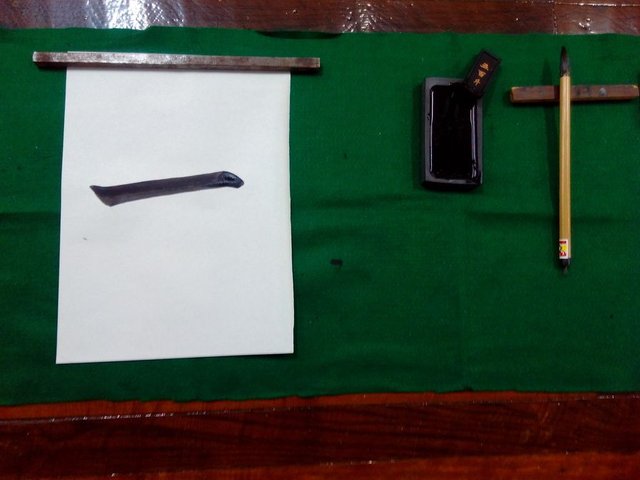Sumi is created by burning oils of various kinds, and the soot is collected and mixed with animal glue. Because the soot is basically carbon molecules, when a stick of sumi is ground on the Suzuri (grinding stone) with water, the extensive back and forth movements create static electricity in the liquid. Sumi ink that has been ground on a suzuri thus becomes charged with human energy (similarly, recall that our nervous system conducts electric messages to the brain) and when a sho artist who is using concentrated energy writes an ideogram using this ink, it is said that the lines contain bokki ( bo=black ink, sumi; [k]ki=energy).

the concentrated energy or ki of certain individuals has been transferred to their art, and that energy of the artist is called kihaku. Power in the movement of the brush can be permanently recorded in a brush stroke. When an artist creates a work in a state of kihaku with the use of sumi ink, that work continues to provide strong impact and emotional appeal to receptive viewers.
A very significant study connecting this type of energy and its physical manifestation was done by the highly respected Tanchiu Koji Terayama, director of Hitsu Zendo. The English translation of his book’s title is Zen and the Art of Calligraphy (transl. by John Stevens; Penguin Group, 1983). In an effort to understand the importance of bokki, Terayama enlisted the assistance of scientists. He had small sections of shodo masterpieces from centuries past magnified to a value of 50,000x with an electron microscope. The researchers discovered that the carbon particles of sumi in a masterpiece showed a distinct alignment, while in a look-alike forgery of the same work, the carbon particles were instead scattered.
As happened to me before, with other traditional arts, modern science confirms ancient knowledge and offers different points of view for approaching it daily practice. In this case, yes, there is a piece of us in everything we do, it is up to us that such piece serves a good purpose and last beyond our life.
Reference
-Shozo Sato, Shodo The Quiet Art of Japanese Zen Calligraphy